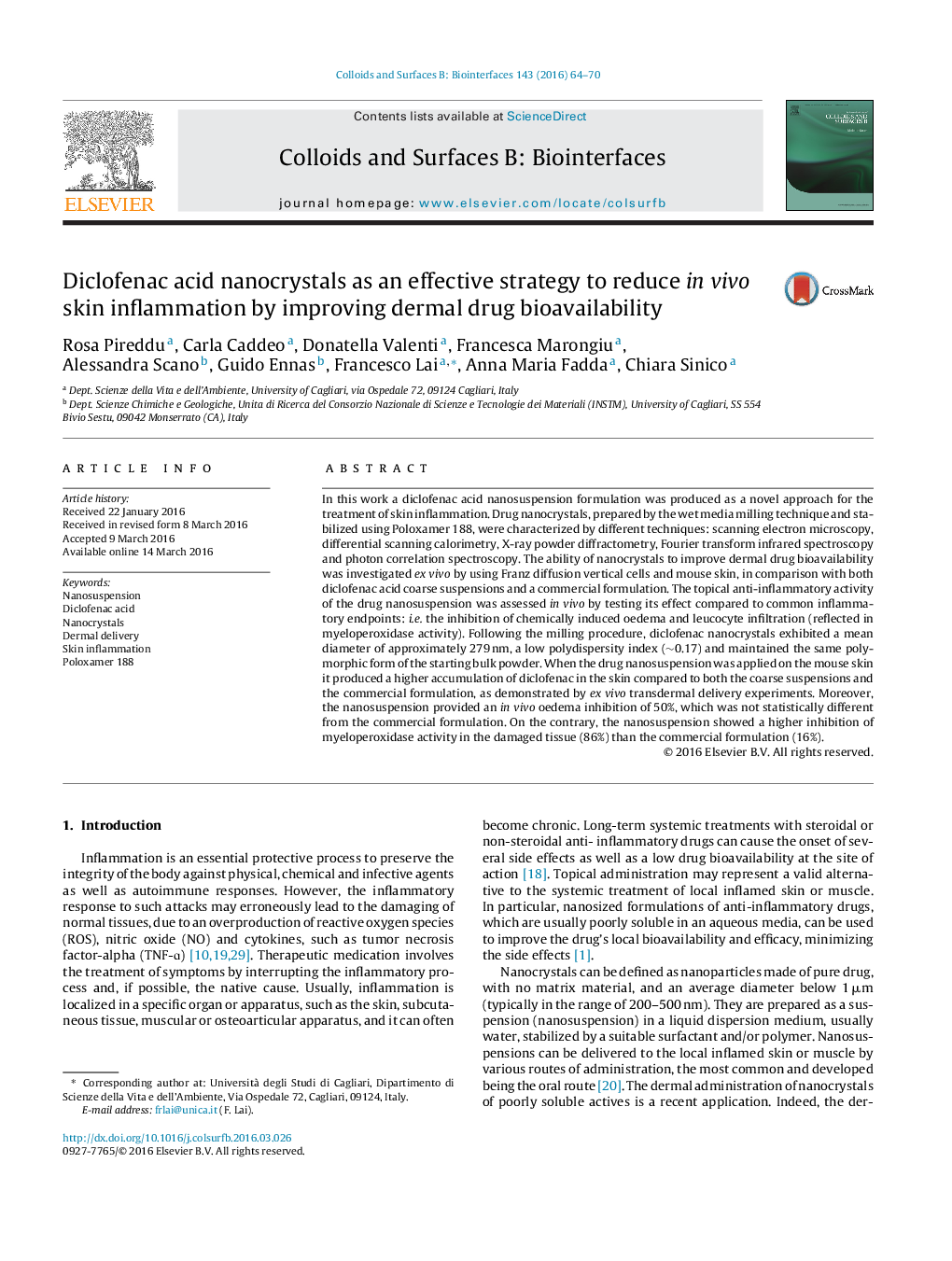| Article ID | Journal | Published Year | Pages | File Type |
|---|---|---|---|---|
| 599023 | Colloids and Surfaces B: Biointerfaces | 2016 | 7 Pages |
•Wet media milling produced nanocrystals retain the polymorphic form of starting powder.•Poloxamer 188 produced a slight oedema reduction and myeloperoxidase inhibition.•Nanosuspensions enhance drug skin accumulation compared to a commercial gel.•Nanosuspensions inhibit in vivo myeloperoxidase activity and oedema in damaged tissues.
In this work a diclofenac acid nanosuspension formulation was produced as a novel approach for the treatment of skin inflammation. Drug nanocrystals, prepared by the wet media milling technique and stabilized using Poloxamer 188, were characterized by different techniques: scanning electron microscopy, differential scanning calorimetry, X-ray powder diffractometry, Fourier transform infrared spectroscopy and photon correlation spectroscopy. The ability of nanocrystals to improve dermal drug bioavailability was investigated ex vivo by using Franz diffusion vertical cells and mouse skin, in comparison with both diclofenac acid coarse suspensions and a commercial formulation. The topical anti-inflammatory activity of the drug nanosuspension was assessed in vivo by testing its effect compared to common inflammatory endpoints: i.e. the inhibition of chemically induced oedema and leucocyte infiltration (reflected in myeloperoxidase activity). Following the milling procedure, diclofenac nanocrystals exhibited a mean diameter of approximately 279 nm, a low polydispersity index (∼0.17) and maintained the same polymorphic form of the starting bulk powder. When the drug nanosuspension was applied on the mouse skin it produced a higher accumulation of diclofenac in the skin compared to both the coarse suspensions and the commercial formulation, as demonstrated by ex vivo transdermal delivery experiments. Moreover, the nanosuspension provided an in vivo oedema inhibition of 50%, which was not statistically different from the commercial formulation. On the contrary, the nanosuspension showed a higher inhibition of myeloperoxidase activity in the damaged tissue (86%) than the commercial formulation (16%).
Graphical abstractAmelioration of the injury of TPA-induced skin inflammation upon administration of diclofenac nanosuspensions.Figure optionsDownload full-size imageDownload as PowerPoint slide
